Input interpretation

diphosphorous tetraiodide
Chemical names and formulas
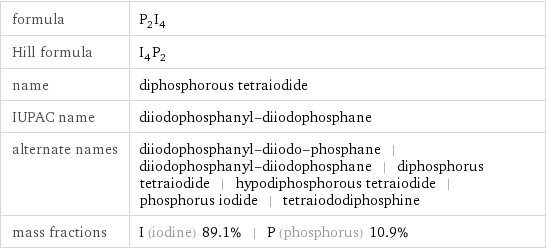
formula | P_2I_4 Hill formula | I_4P_2 name | diphosphorous tetraiodide IUPAC name | diiodophosphanyl-diiodophosphane alternate names | diiodophosphanyl-diiodo-phosphane | diiodophosphanyl-diiodophosphane | diphosphorus tetraiodide | hypodiphosphorous tetraiodide | phosphorus iodide | tetraiododiphosphine mass fractions | I (iodine) 89.1% | P (phosphorus) 10.9%
Lewis structure
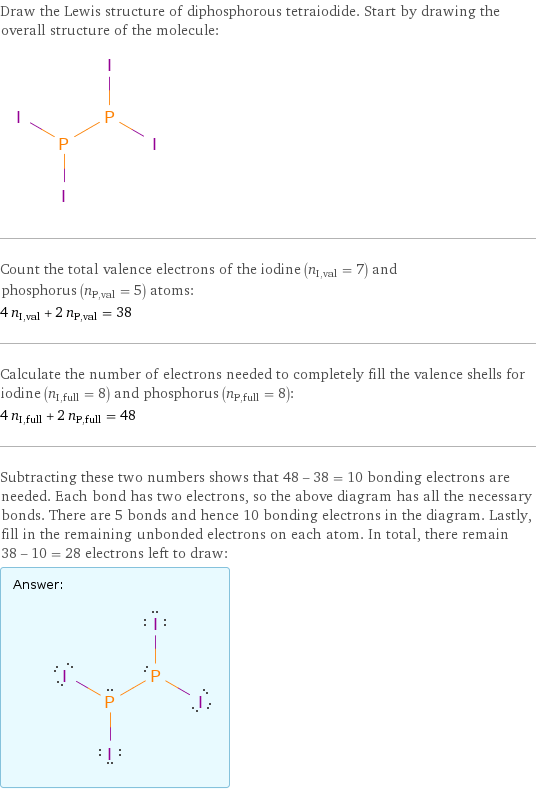
Draw the Lewis structure of diphosphorous tetraiodide. Start by drawing the overall structure of the molecule: Count the total valence electrons of the iodine (n_I, val = 7) and phosphorus (n_P, val = 5) atoms: 4 n_I, val + 2 n_P, val = 38 Calculate the number of electrons needed to completely fill the valence shells for iodine (n_I, full = 8) and phosphorus (n_P, full = 8): 4 n_I, full + 2 n_P, full = 48 Subtracting these two numbers shows that 48 - 38 = 10 bonding electrons are needed. Each bond has two electrons, so the above diagram has all the necessary bonds. There are 5 bonds and hence 10 bonding electrons in the diagram. Lastly, fill in the remaining unbonded electrons on each atom. In total, there remain 38 - 10 = 28 electrons left to draw: Answer: | |
3D structure
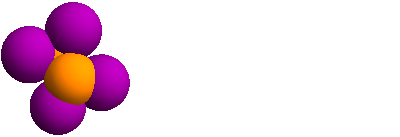
3D structure
Basic properties
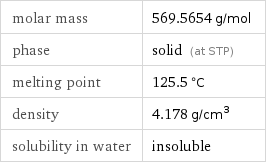
molar mass | 569.5654 g/mol phase | solid (at STP) melting point | 125.5 °C density | 4.178 g/cm^3 solubility in water | insoluble
Units

Solid properties (at STP)

density | 4.178 g/cm^3
Units

Chemical identifiers
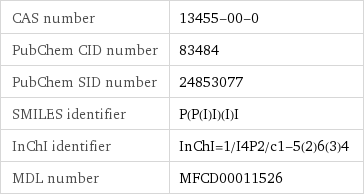
CAS number | 13455-00-0 PubChem CID number | 83484 PubChem SID number | 24853077 SMILES identifier | P(P(I)I)(I)I InChI identifier | InChI=1/I4P2/c1-5(2)6(3)4 MDL number | MFCD00011526